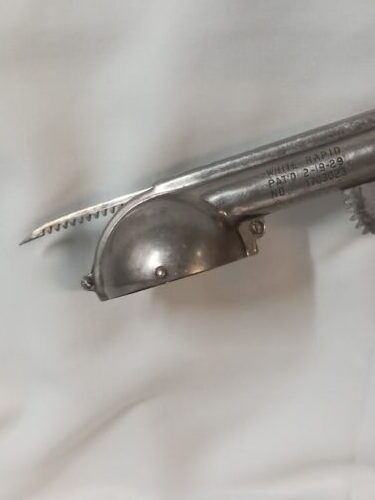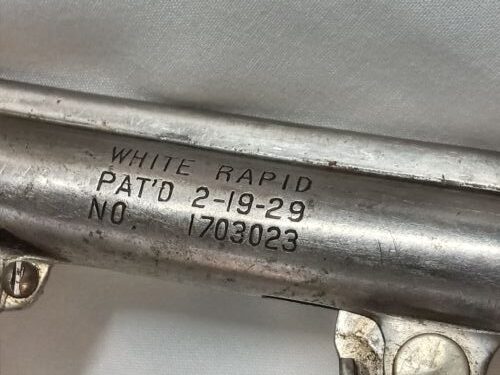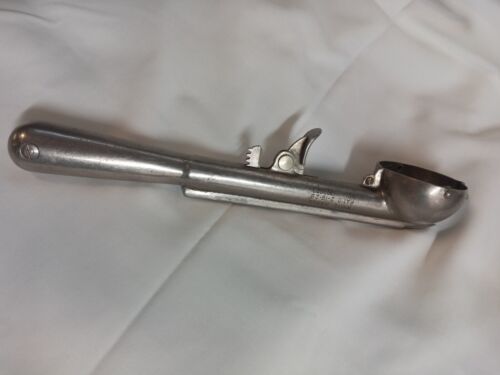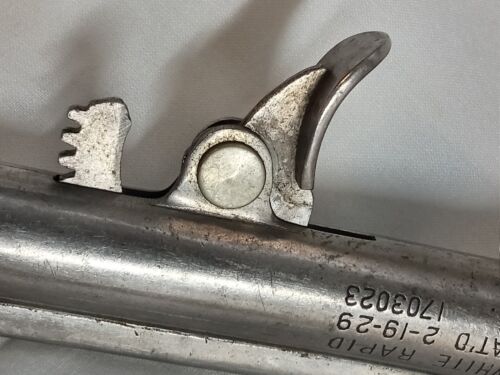What’s something resellers, collectors, and lawyers have in common? Friends and family always ask for free advice.
And I give it. After a lifetime as a collector and student of all things old and beautiful, friends turn to me when they want to sell something they’ve found or inherited. Their questions range from identification and values to history. I’m flattered, honestly. It’s not a chore (although it may take me weeks to provide an answer to a real stumper).
So, when WorthPoint® saw potential in helping The Salvation Army evaluate donations of fine art, high-end antiques, and curious objects, I was all in. Never before was I presented with an opportunity to lend my skills and experience to help a charity. I call it “using my powers for good.” The opportunity feeds my soul in ways I never imagined possible.
WorthPoint has traveled across the country (at our expense) for more than a year, visiting Salvation Army offices. We hold seminars on becoming better buyers and sellers as well as how to identify fine art—a tricky reselling and collecting area for almost everyone. Attendees of these workshops get a guided tour to shop Family Stores and even a chance to dig through unsorted donations in warehouses. It’s a treasure hunter’s dream come true. (It’s also comical to look over rows of bins and see only backsides as people compete to find the most valuable object for the charity to post on its eBay Stores [whoever finds an item that sells for the most money receives an annual subscription to WorthPoint’s extensive pricing database and suite of tools and products.]) All funds support the charity’s Adult Rehabilitation Centers, living quarters, and work programs designed to help men and women kick alcohol and drug addictions.
But, before all these fun events took place, I spent hours preparing a presentation and finding items from store floors and warehouses to illustrate the finer points. It’s not easy talking about so much information within ninety minutes. Like a dog running through a forest, my tangents and asides lead crowds to unexpected places.
Searching for props is my favorite part. The hunt is a thrill. I’ve identified artworks worth tens of thousands of dollars; however, I like those true stumpers the most. And what student of antiques doesn’t? After spending a lifetime seeing many of the same mass-produced items, those unique (often handcrafted) items make a collector’s heart beat faster. My heart lept into my throat at a recent Charlotte, South Carolina, event.
A regular donation wasn’t regular at all. It was made of steel. A bowl was at the end of a handle, and a trigger on the handle caused a three-inch saw blade to pop out over the back of it. I was told the odd object was a medical device. “Maybe it was used to cut and scoop out tumors?” I wouldn’t have been surprised if it was as old as the American Civil War. Surgical tools at that time looked like torture devices: saws such as the rongeur (used to cut bone), a Hey’s saw (used for cranial resection), and straight forceps, or “bullet extractors,” are but a few. That stuff makes today’s dentist drills look like lollipops.

Photo credit: The Salvation Army
My quick once-over told me a different story, and I turned on my detective skills. The tool was lighter than expected (hollow handle), and the saw blade trigger had a smooth movement (not much strength needed). The trigger also activated an ejector scoop with a separate spring release. This machine is an engineering marvel. The handle also held directions to a treasure map:
“White Rapid
Pat’d 2-19-29
NO. 1703023”
Could it be a company name or the brand name of the scoop? The patent date and a number were more than enough information to help me find out.
The first stop was the U.S. Patent Public Search website. Those who haven’t accessed this database should be warned. Learning to use it takes at least an hour of instruction (including a forty-minute audio presentation). The time is well spent. The database is the most powerful tool to identify items, view hand-drawn schematics, and read descriptions that inventors themselves most often write. Fascinating stuff.

Photo credit: The Salvation Army
That’s how I met a man named George C. White Jr. White, who lived in Trenton, New Jersey— a prolific inventor. Improving everyday life was his specialty and life’s work. He patented a design for an improved “hat retainer,” or a specialized hat pin he described as a tool to “provide simple, reliable and efficient (sic) means for holding a lady’s hat securely in place without piercing the hat crown every time the hat is put on, and in which the hat may be removed from the head without withdrawal of the retainer.”
His inventions knew no bounds. Machine-readable documents, sophisticated valve gear for steam locomotives, a plumb-and-level instrument, and tools to improve the use of gramophones. One word that raised my right eyebrow on the list of his accomplishments was “Scoop.” Gotcha, Mr. White.
A patent submission dated April 28, 1928, said it all. “This invention relates to a scoop used for serving ice cream and other edible products and for forming articles or filers for confectionaries.” White’s original idea called for the handle to be coated in porcelain. He describes how his mechanization caused a “toothed rack” that would sink into and push the scoop out of the ice cream. Why such a need? That answer can be answered with some sleuthing.
The history of ice cream has as many stories as a teenager caught sneaking out at night. Nonetheless, this is true: Ice cream as we know it was developed in the 1820s and became wildly popular in the first quarter of the 20th century. Ice cream parlors and soda fountains dotted city blocks around the world.
Early ice cream was made with high butterfat content. Producers didn’t whip it with air like today’s ice cream. It was served at about five to ten degrees Fahrenheit, thanks to blocks of ice cut from lakes in the winter. My mother loved telling us kids how horses and carts delivered the blocks and that the ice man would give children slivers to enjoy on hot summer days.
Considering how White assembled his intricate and complicated scoop, it makes sense to think he made it for businesses, such as soda fountains, not for home use. A saw blade would make serving scoop after scoop all day long easier on the wrist. Additionally, the scoop’s quarter-cup capacity would easily slide the perfect amount of ice cream into a tulip-shaped footed glass roughly five or six inches tall. Floats were made with Coca-Cola or just about any soda.
Once I learned all I could about the scoop and the history of ice cream (more than I ever wanted to know), the next question was what it was worth. Naturally, I turned to WorthPoint’s 675-million-entry Price Guide for an answer. And what an answer it was.
Considered rare—defined by collectors as items in which less than ten are known to exist—a 2007 eBay auction is the only public record of a White Rapid ice cream scoop sold publicly. It brought a mouth-watering $7,978.78 and claimed the world record as the most valuable scoop of its kind. It is the most valuable object I’ve had the pleasure of discovering.
Showing the ice cream scoop’s value and history to the staff at the Charleston Salvation Army was a moment I’ll never forget. To say the team was astounded is an understatement. The scoop is among the most valuable items donated to that center.
I set the current sale value at $10,000 because of its rarity and the fact one hasn’t been sold in fifteen years. As of December 2022, the scoop is now up for bids on the Salvation Army Miami ARC eBay store.
Imagine the bragging rights and the charitable donation that will come to the right collector.
Eric Bradley is WorthPoint’s Vice President of Editorial Content and Public Relations. He is known throughout the antiques and collectibles trade as the author of twelve books, including the critically acclaimed Mantiques: A Manly Guide to Cool Stuff, Harry Potter – The Unofficial Guide to the Collectibles of Our Favorite Wizard, and two Picker’s Pocket Guides: SIGNS & TOYS. Bradley is also an eight-time editor of the annual Antique Trader Antiques & Collectibles Price Guide, America’s top-selling price guide.
WorthPoint—Discover. Value. Preserve.
The post Tale of a $10,000 Ice Cream Scoop appeared first on WorthPoint.


